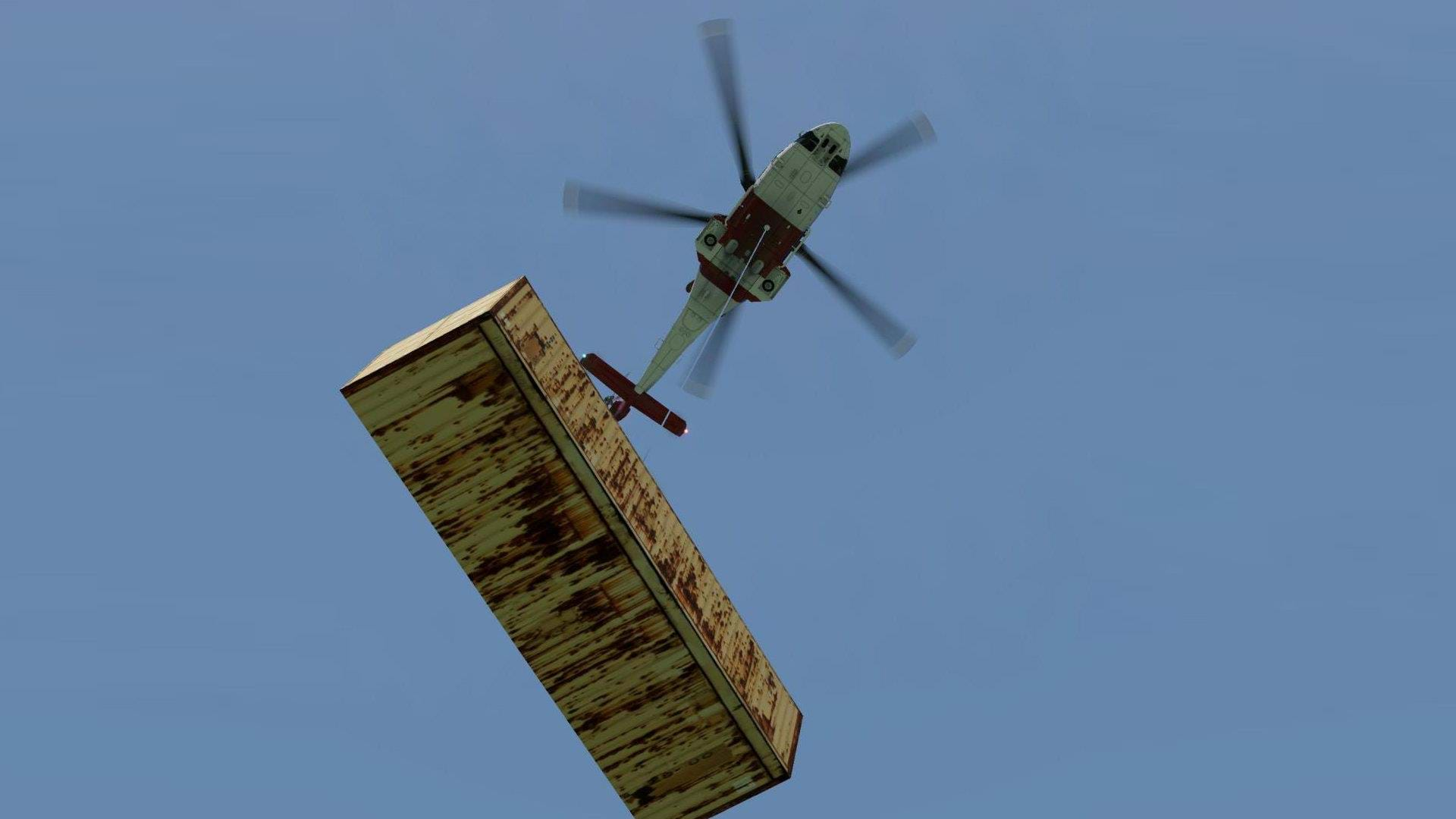The plugin was not developed to be just used on its own (although it’s possible to do so). The idea is for the community to keep on evolving it, as it was released as open source at Github.
Using it is very simple and, “using the GUI you can place objects in front of the helicopter and connect them with the rope. Then you can take off and release the load where you want to. The cargo will continue the physics computation even after release, so it will glide on the ground if you where not slow enough and it will drop if you release it mid flight. If you exceed the limitations of the rope, it will rupture and the cargo will fall down.”
Helicopter Sling Load provides a set of datarefs and commands that other plugins can use to, for example, place their cargo at any coordinates in the world.
Features
The plugin is filled with amazing features that make it a really advanced system for sling loading and external cargo.
- Gravity:
- Using the X-Plane dataref. Yes, it should also work on Mars.
- Rope forces: The rope is considered an single mass oscillator.
- Stretch forces.
- Damping forces according to the speed the rope is stretching.
- Air drag: The object is considered cuboid.
- Object speed plus wind.
- Air density depending on altitude and weather, using the X-Plane dataref.
- CW value for each side of the cuboid.
- Surface of each side.
- Roll and pitch of the object are considered.
- Water drag:
- Same as the Air drag, except that the object is always upright as it hits the ground.
- Air and water drag are weighted according to the water line. This means that the wind might move a floating object.
- Water displacement:
- Upward forces by the water displacement. If the object is lighter than water, it will swim.
- Bambi buckets don’t swim and fill with water instantly, according to the water line.
- Friction:
- Static friction when the object is still on the solid ground.
- Glide friction when the object is moving on the solid ground.
- Damping by the operator: When lifting an object, the operators on winch or on the hook will usually try to stabilize the load. Otherwise the short rope would start hazardous oscillations.
- Rope length where the operators start the stabilization.
- Maximum force the operator may apply .
- For 3rd party plugins:
- Plugin may apply additional forces (e.g. to simulate ground operator).
- Plugin may rotate the cargo.
- Forces on the Helicopter:
- Forces of the rope.
- Momentum that is caused by the positioning of the winch
There are a few things missing, though and the author has listed them all as well:
- Cargo rotation (except rotation by external plugin)
- Rotor downwash
- Ground impact:
- When hitting the ground, the vertical speed is put to zero. No bouncing off the ground.
- When hitting the ground, the object is always upright. No flipping over.
- There is no momentum on the load. All forces apply in the CoG, which is considered at the rope
- mounting point.
- Bambi bucket limited water flow when dropped into water
- Terrain steepness is not considered. For HSL the terrain is always flat.
- Cargo maximum forces. Cargo never breaks, no matter how hard it hits the ground.
- Full rope simulation, currently the rope is always straight.
- Fire temperature increase of the surroundings
- Fire turbulence simulation
- Fire in replay
- Load Profiles
Honestly, the amount of information about the plugin is so long that I really recommend you read it all at the download page and explore it.
This plugin was tested in X-Plane 11.50b4, using the Vulkan engine. In fact, it has some issues with the OpenGL version.








